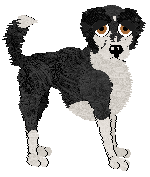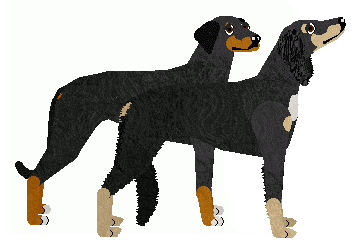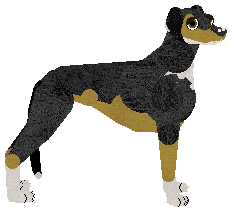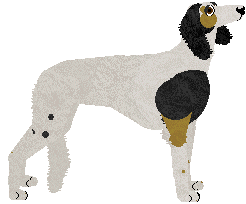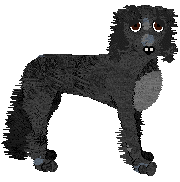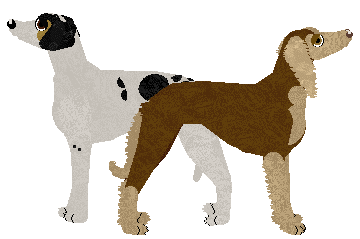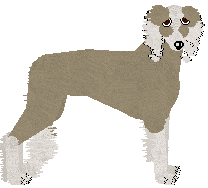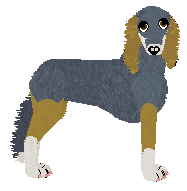Saluki-like dogs have been found in several thousand year old archeological findings, not only in the Middle Eart and Northern Africa, but also in China (here as early as 202 B.C), and the dogs were almost always depicted in hunting scenes. It has also been known under the name 'persian greyhound', but in Iran it was known as 'sagi-i-tazi', which means 'arabic hound'. The arabs call it 'El Hor', which means 'the noble', for the saluki has long been very important to the beduins as a hunter. The saluki hunts without human help, and this is the form of hunting that was later turned into lure coursing.
The first western saluki breedings to place in England during the 1920's, but there had been a few salukis the country for a few years before that.
The saluki should give the impression of grace, strength, energy and speed. Its expression is dignified, mild with a see-through gaze. The head is long and thin, with little stop. The ears are long, set high and well covered in hair. The neck is long, flexible and muscular. The body should have a deep chest with tuck up and straight back. Straight frontlegs with well angulated hind. The tail is set low, long enough to reach the hock and carried in a sable shape when the dog is alert. The coat can be smooth or long, always smooth and silky.







 with
with 


 or
or 
 with
with 

 markings in the traditional pattern.
markings in the traditional pattern. in any amount.
in any amount.  except in livers which have
except in livers which have 

 except in livers which have
except in livers which have  , may be
, may be  in white dogz.
in white dogz.